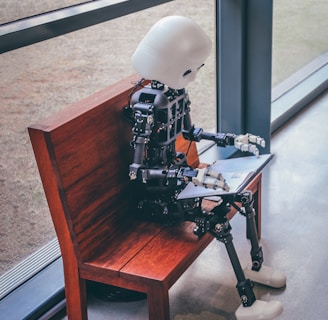
AI for Good or for Control? 9 Risks of AI in Public Policy and Social Services
AI is reshaping public policy and social services, but is it a tool for progress or control? From bias and surveillance to corporate dominance, AI risks deepening inequality. Without oversight, it will manage us—not empower us. Explore nine critical risks and what we must do to safeguard democracy.
STRATEGY & SYSTEMSFUNDRAISING & PHILANTHROPYAI & INNOVATION IN SOCIAL IMPACT


AI for Good or for Control? 9 Risks of AI in Public Policy and Social Services
AI is revolutionizing public policy and social services, promising efficiency, predictive insights, and better resource allocation. But with these advancements comes a darker side—one that threatens equity, autonomy, and democratic decision-making. Is AI being used for good, or is it another tool of control? Here are nine critical risks to consider:
1. Algorithmic Bias & Discrimination
AI systems inherit biases from historical data. When used in public services—welfare, housing, healthcare—AI can reinforce systemic inequalities, disproportionately harming marginalized communities. For example, automated eligibility screenings can wrongfully deny benefits based on flawed assumptions about risk or need.
2. Lack of Transparency in Decision-Making
AI’s decision-making process is often a black box. If an algorithm determines who gets public assistance, who qualifies for housing, or even who gets policed more, but no one can explain why, accountability erodes. This lack of transparency diminishes public trust and makes it nearly impossible to challenge wrongful outcomes.
3. Data Privacy & Surveillance Overreach
Governments and social service agencies collect vast amounts of personal data. When AI analyzes this data, the potential for mass surveillance and invasive tracking grows. Welfare recipients, unhoused populations, and individuals in the justice system could be monitored and assessed with little consent, leading to tech-driven social control rather than empowerment.
4. Automation of Public Service Jobs
AI promises cost savings, but at what expense? The automation of caseworkers, administrative roles, and even frontline service providers risks dehumanizing public services. AI-driven chatbots and decision-making systems lack the nuance and empathy that human social workers provide, making services colder, more rigid, and prone to error.
5. Digital Redlining & Access Gaps
AI-driven services assume everyone has equal access to technology, but in reality, many do not. Low-income communities, rural populations, and people with disabilities face barriers to digital participation, creating a new form of exclusion—those who can't navigate AI-driven systems may be locked out of essential services.
6. Over-Policing & Criminalization of Poverty
Predictive policing and risk assessment tools, often embedded in public policy, criminalize poverty. AI is used to predict "fraud" in welfare programs or to identify "high-risk" individuals, disproportionately targeting Black, Brown, and low-income communities. Instead of offering support, AI often funnels vulnerable populations into punitive systems.
7. Manipulation of Public Perception & Democracy
AI is already shaping public opinion through targeted misinformation, but what happens when it starts shaping policy priorities? Governments could use AI to manufacture public consent, suppress dissent, or push narratives that align with corporate interests rather than community needs.
8. Dependency on Private Tech Companies
The AI systems used in public policy are largely built and controlled by private corporations with little oversight. When for-profit algorithms dictate public good, priorities shift towards efficiency and cost-cutting rather than equity and human rights. This privatization of governance is a dangerous step toward tech authoritarianism.
9. Weak Regulatory Frameworks
Most governments lack the legal and ethical frameworks to properly regulate AI. The pace of technological advancement far outstrips policymaking, leaving loopholes for exploitation. Without strong safeguards, AI in public policy risks deepening economic disparities, racial injustices, and social control mechanisms.
So, AI for Good or AI for Control?
The truth is, AI can be both. It can democratize access to information, streamline social services, and enhance public policy—but only if designed with ethics, equity, and community input at its core. Without proper regulation and accountability, AI will not empower us—it will manage us.
What Can We Do?
Demand transparent AI policies
Push for human oversight in AI-driven decisions
Advocate for tech equity and access
Hold governments and corporations accountable
This is not just a conversation about technology. It’s about power, control, and the future of public services. The question is: who will AI serve?







Subscribe to The Catalyst Network
Building a network of disruptors, visionaries, and policy leaders shaping the future.


